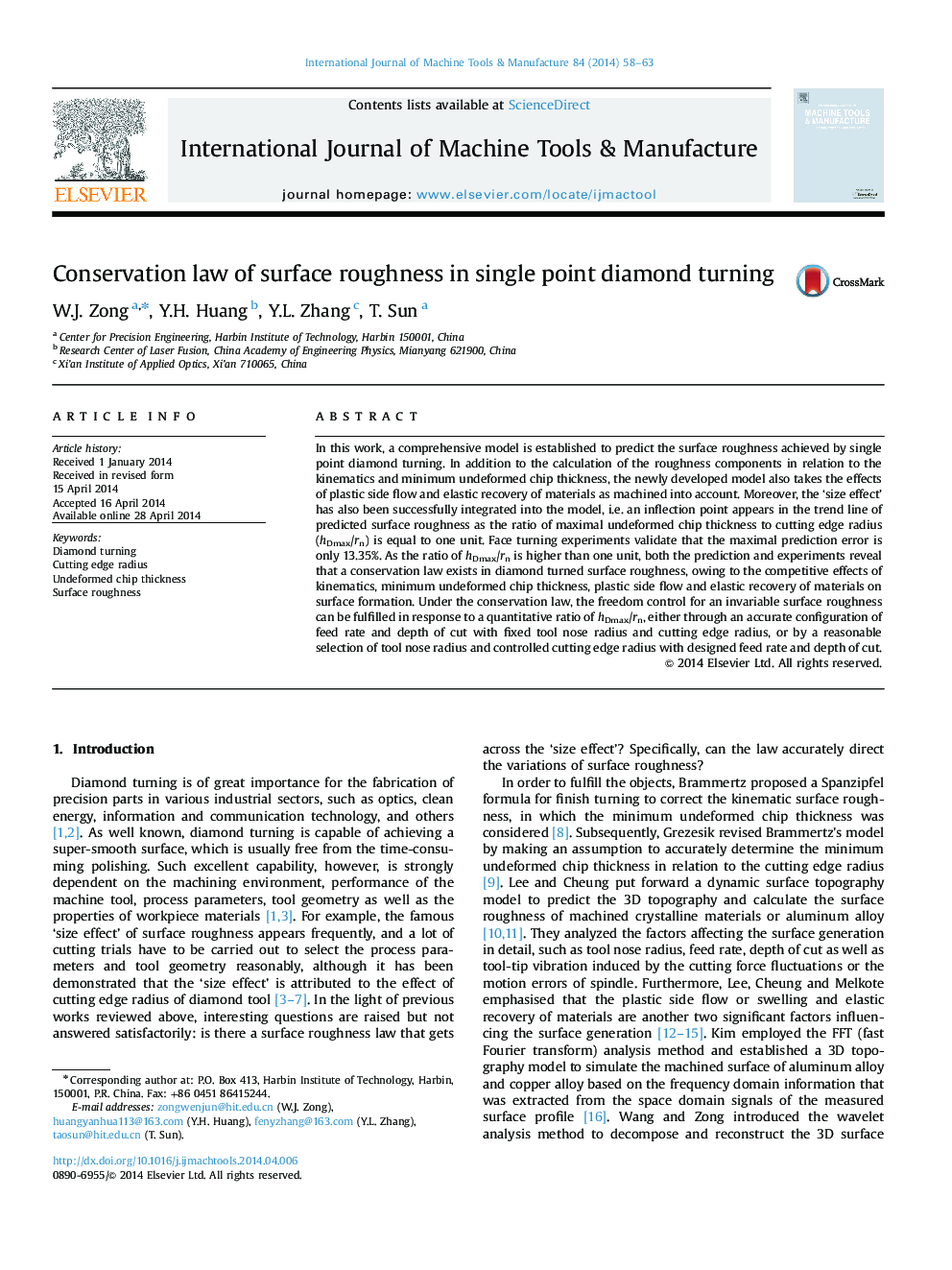| کد مقاله | کد نشریه | سال انتشار | مقاله انگلیسی | نسخه تمام متن |
|---|---|---|---|---|
| 778862 | 1464509 | 2014 | 6 صفحه PDF | دانلود رایگان |
• A comprehensive model is established to calculate diamond turned surface roughness.
• The ‘size effect’ is successfully taken into account in the model.
• A conservation law is firstly found in diamond turned surface roughness.
• Accurate configuration of tool geometries or process parameters conserves surface roughness.
In this work, a comprehensive model is established to predict the surface roughness achieved by single point diamond turning. In addition to the calculation of the roughness components in relation to the kinematics and minimum undeformed chip thickness, the newly developed model also takes the effects of plastic side flow and elastic recovery of materials as machined into account. Moreover, the ‘size effect’ has also been successfully integrated into the model, i.e. an inflection point appears in the trend line of predicted surface roughness as the ratio of maximal undeformed chip thickness to cutting edge radius (hDmax/rn) is equal to one unit. Face turning experiments validate that the maximal prediction error is only 13.35%. As the ratio of hDmax/rn is higher than one unit, both the prediction and experiments reveal that a conservation law exists in diamond turned surface roughness, owing to the competitive effects of kinematics, minimum undeformed chip thickness, plastic side flow and elastic recovery of materials on surface formation. Under the conservation law, the freedom control for an invariable surface roughness can be fulfilled in response to a quantitative ratio of hDmax/rn, either through an accurate configuration of feed rate and depth of cut with fixed tool nose radius and cutting edge radius, or by a reasonable selection of tool nose radius and controlled cutting edge radius with designed feed rate and depth of cut.
Journal: International Journal of Machine Tools and Manufacture - Volume 84, September 2014, Pages 58–63
